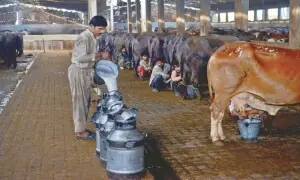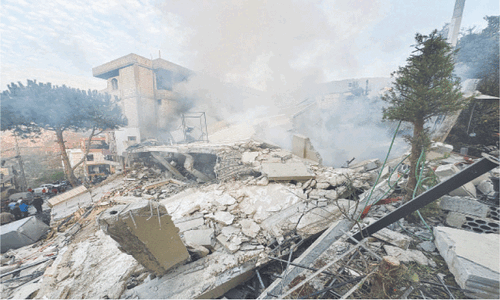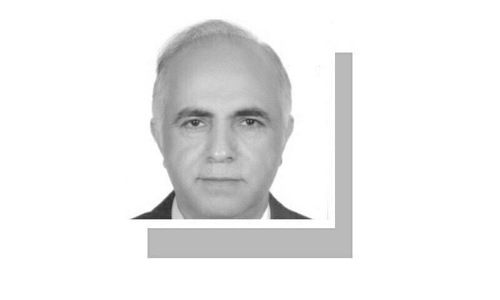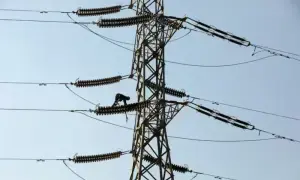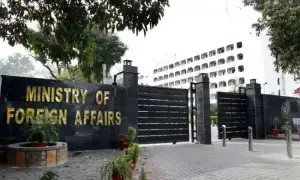The term ‘resilience’ has become a mainstay in global development and climate discourse, championed as a guiding principle for policy responses to climate change. Government institutions and civil society alike present it as a catch-all solution for addressing environment and climate-induced crises.
However, in the context of Pakistan’s rapidly urbanising landscape, where environmental vulnerabilities are intertwined with socio-economic precarity, the concept of resilience requires a deeper examination. Who is expected to be resilient, and what does resilience mean for those most affected by climate and environment risks?
In a country repeatedly battered by floods, heatwaves, resource scarcity and toxic levels of air quality, the resilience of urban populations cannot be reduced to mere adaptive capacity, it must be understood in relation to systemic inequalities, governance failures and the political economy of risk.
Resilience, as conceptualised in environmental and urban studies, refers to the ability of individuals, communities or systems to withstand, recover from and adapt to external shocks. Scholars studying resilience emphasise that it is not just about enduring crises, but about how social, economic and political systems interact to shape the capacity to respond to them.
In the face of recurring environmental disasters such as floods, heatwaves, resource scarcity and toxic air, what does it mean to promote ‘resilience’? Is it truly addressing the root causes or merely applying temporary fixes?
However, in Pakistan’s development sector, resilience is often framed in terms of technical solutions, such as infrastructure projects or disaster management strategies, without addressing the deeper social and economic inequalities that make certain groups more vulnerable in the first place. In Pakistan, where informal settlements, weak infrastructure and governance challenges exacerbate climate risks, resilience cannot be examined in isolation from broader socio-political and economic factors.
VULNERABILITY, RISK AND RESILIENCE
To meaningfully engage with resilience, it is crucial to distinguish it from vulnerability and risk. Vulnerability refers to the susceptibility of individuals or communities to harm due to their socio-economic and spatial positioning.
In Pakistan’s urban areas, factors such as informal housing, lack of access to water and sanitation and socio-economic marginalisation heighten vulnerability, making certain populations more exposed to external shocks. Risk, on the other hand, is the probability of a hazard or an external shock intersecting with vulnerability to produce adverse outcomes.
In cities such as Karachi and Lahore, risk is not just an environmental issue, but also one of class, as low-income communities often live in areas that have inadequate drainage system capacities that are vulnerable to urban flooding, thereby increasing their risk.
Resilience, in this context, must go beyond survival and instead focus on transforming the conditions that produce risk and vulnerability in the first place.
LIVED REALITIES
For many urban dwellers in Pakistan, resilience is not just about bouncing back from crises, but about navigating ongoing hardship and uncertainty. In recent years, extreme weather events and environmental crises, such as urban flooding, heatwaves and poor air quality, have exposed the inadequacies of resilience-building efforts that emphasise short-term recovery, while ignoring long-standing structural issues.
Major cities including Karachi, Lahore and Islamabad experience frequent urban flooding due to poor drainage systems and unregulated urban expansion, disproportionately affecting informal settlements that remain excluded from formal planning processes.
In these spaces, resilience is often portrayed as a community-driven effort but, in reality, it is shaped by larger systemic forces that dictate who gets access to safe housing, clean water and reliable infrastructure. The burden of resilience falls disproportionately on those least equipped to bear it, such as women, daily wage labourers and marginalised communities, who are expected to adapt while the conditions that create their vulnerability remain unchanged.
THE GOVERNANCE OF RESILIENCE
In Pakistan, urban governance is characterised by fragmented institutional frameworks, weak disaster response mechanisms and a lack of inclusive planning. The air quality crisis in Punjab exhibits these shortcomings every year. The absence of long-term regulatory enforcement and weak institutional coordination mean that the air quality crisis is treated as a seasonal emergency rather than a chronic governance failure.
The burden of adapting to deteriorating air quality falls on individuals who are expected to self-protect through personal measures, such as masks and air purifiers — solutions that are financially inaccessible for many. The lack of a robust crisis response mechanism and the failure to integrate air quality management into urban resilience planning reflects these broader governance shortcomings.
A more critical and justice-oriented approach to resilience demands moving beyond adaptation to address the root causes of vulnerability. Pakistan’s urban resilience agenda must prioritise inclusive urban planning that strengthens land-use policies to prevent the marginalisation of informal settlements and which integrates low-income communities into formal city planning processes.
To that end, strong local governments are essential for fostering resilience at the community level, by creating mechanisms that allow cities to anticipate, absorb and adapt to environment-related challenges. A well-functioning local government system can implement proactive measures, such as improved urban planning, targeted social protection programmes in times of crises, and climate-responsive policies tailored to the specific needs of different urban populations.
Local governments play a crucial role in developing early warning systems, strengthening public services and ensuring equitable infrastructure development, particularly for marginalised communities. Moreover, they can facilitate participatory decision-making, engaging communities in resilience-planning and ensuring that adaptation strategies address the lived realities of vulnerable groups.
Without a decentralised and empowered local governance structure, urban resilience remains fragmented, reactive and ineffective in addressing long-term environmental risks.
The writer is a Commonwealth Scholar at the University of Bristol in the UK
Published in Dawn, EOS, April 20th, 2025












